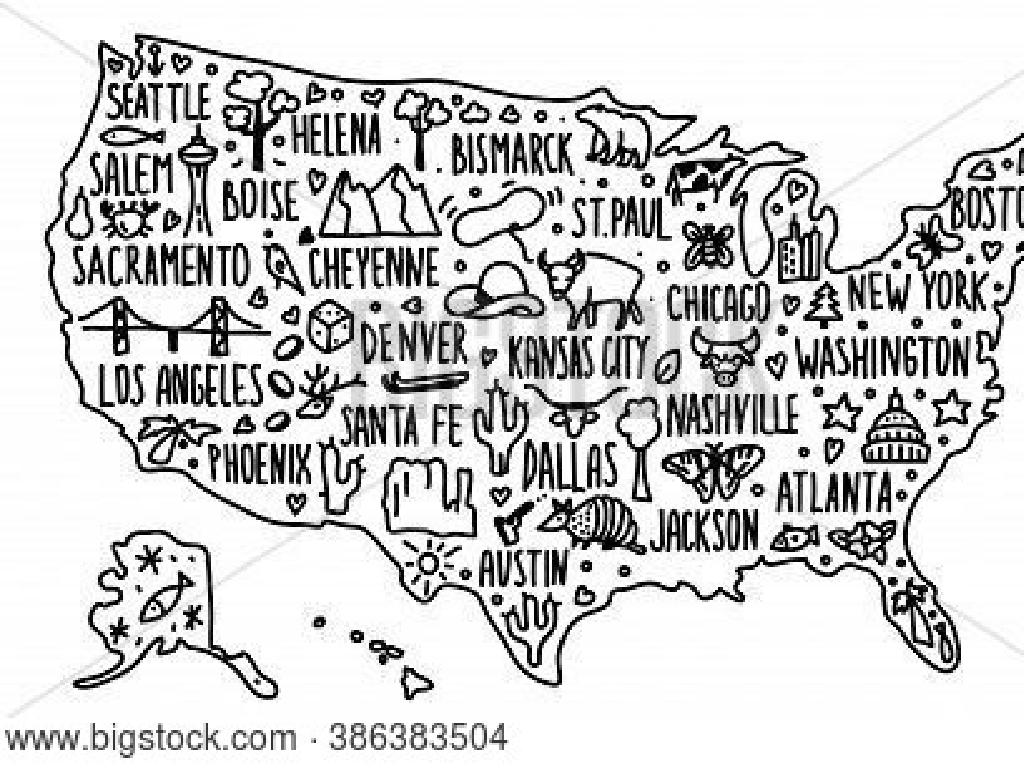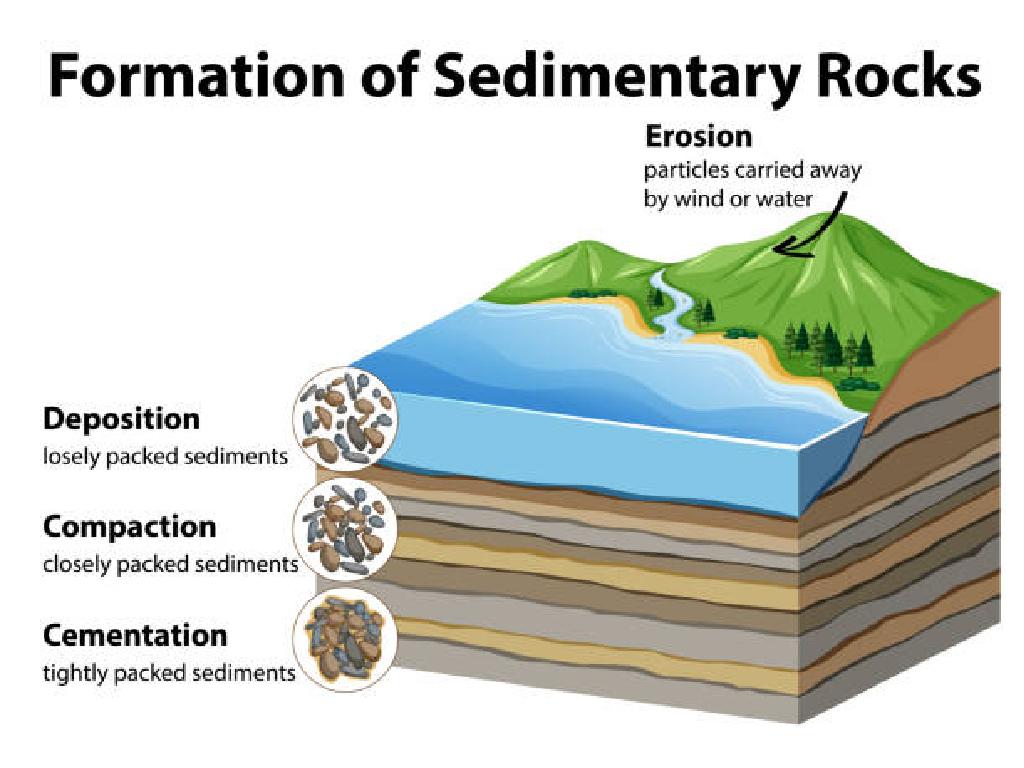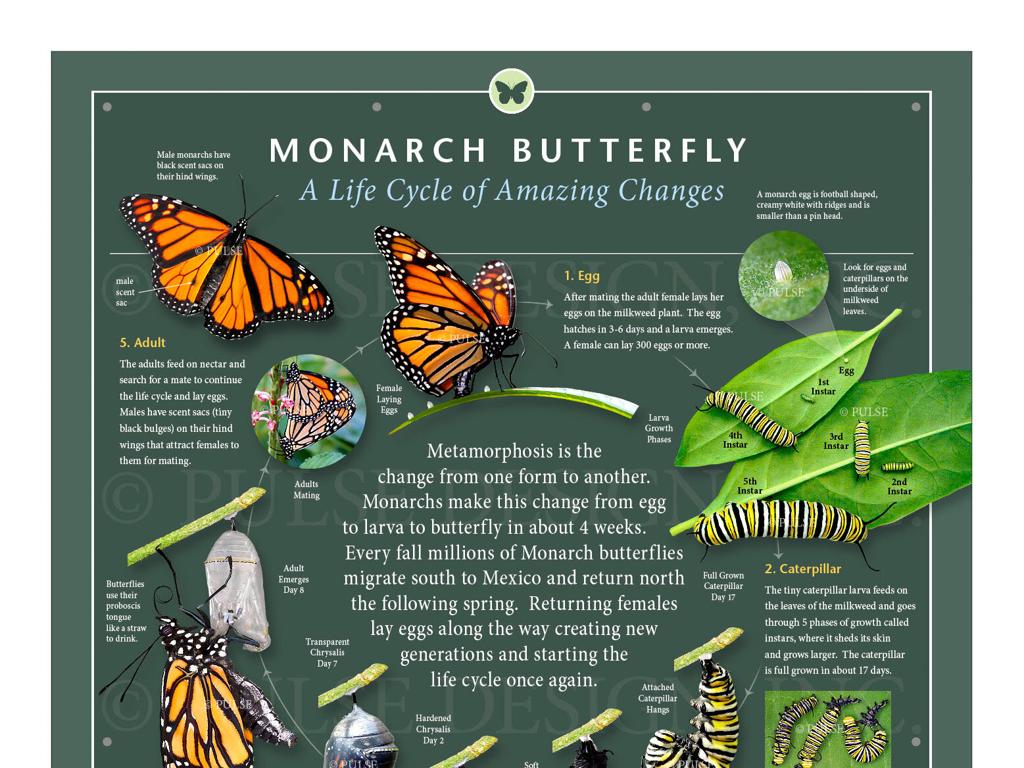What'S The Difference Between Weather And Climate?
Subject: Science
Grade: Fifth grade
Topic: Weather And Climate
Please LOG IN to download the presentation. Access is available to registered users only.
View More Content
Weather vs. Climate: Understanding the Difference
– Daily weather patterns
– Weather includes temperature, rain, and wind of a day or week.
– Climate explained
– Climate is the average weather over many years in a region.
– Weather vs. Climate
– Weather changes day-to-day, climate is the long-term pattern.
– Impact on our lives
|
This slide introduces the concepts of weather and climate, aiming to clarify the differences between them for fifth-grade students. Begin by discussing daily weather patterns, such as temperature, precipitation, and wind, which are immediate and short-term. Then, explain climate as the long-term average of weather in a particular area, including typical ranges of temperature and rainfall over years or decades. Emphasize that while weather can change from day to day, climate represents the usual conditions expected in a region. Highlight how both weather and climate can affect our daily lives, from the clothes we wear to the crops that can be grown. Encourage students to think of examples of weather and climate from their own experiences.
Understanding Weather
– Weather: day-to-day atmosphere
– Includes various elements
– Elements like temperature, humidity, rain, wind, and how clear the sky is
– Weather changes rapidly
– Can change from sunny to rainy quickly!
– Importance of weather forecasts
– Forecasts help us plan our day and stay safe
|
This slide introduces the concept of weather to the students. Weather is described as the condition of the atmosphere at any given time and place, including factors such as temperature, humidity, precipitation, wind, and visibility. Emphasize that weather is what we experience day-to-day and can change very quickly, which is why it’s important to check the weather forecast. Encourage students to think about how the weather affects their daily decisions, like what to wear or what activities they can do outside. Discuss how meteorologists predict the weather and how this information helps us prepare for our day.
Understanding Climate
– Climate: average weather over time
– Think of climate as a region’s usual weather over years or centuries.
– Observed from long-term patterns
– Scientists record weather for 30+ years to define climate.
– Predicts regional weather trends
– Climate gives us an idea of typical conditions, like dry summers.
– Not a daily weather forecast
|
This slide aims to clarify the concept of climate as distinct from daily weather. Climate is the average of weather conditions over an extended period, typically 30 years or more, which helps scientists and meteorologists understand the typical weather patterns of a particular region. It’s important for students to grasp that while climate gives us an expectation of weather trends (like cold winters or rainy seasons), it does not predict the weather for any given day. Activities can include comparing climates of different regions and discussing how climate can affect lifestyle, clothing, and agriculture in those areas.
Comparing Weather and Climate
– Weather: short-term changes
– Climate: long-term patterns
– Daily weather vs. seasonal wardrobe
– Choose clothes for today’s weather, but have a variety for the climate
– Rainy day vs. rainy season
– A single storm vs. expected weather over months
|
This slide aims to clarify the difference between weather and climate to the students. Weather refers to the atmospheric conditions that occur locally over short periods, from minutes to weeks, like rain, sunshine, wind, and snow. Climate, on the other hand, is the average of that weather over time and space, typically over 30 years. It’s important to use relatable examples for the students, such as deciding what to wear on any given day versus what types of clothes they have in their wardrobe for the whole season. This can help them understand the concept of variability versus average conditions. Discuss examples like a single rainy day, which is a weather event, versus a region’s rainy season, which describes the climate.
Factors Affecting Weather and Climate
– The Sun: Earth’s energy source
– The sun provides the warmth necessary for weather patterns.
– The Oceans: Heat distributors
– Oceans circulate warm and cold water, affecting temperatures.
– The Atmosphere: Our protective layer
– The atmosphere contains gases that protect us and influence weather and climate.
– Weather vs. Climate: What’s the difference?
|
This slide aims to explain the primary factors that influence weather and climate to fifth-grade students. The sun is the ultimate source of energy that drives weather systems and provides the warmth necessary for life. The oceans act as a global conveyor belt, moving warm and cold water across the planet, which can affect regional climates. The atmosphere, with its various layers and gases, acts as a shield against harmful solar radiation and plays a critical role in creating diverse weather patterns and climate zones. Lastly, ensure students understand the difference between weather (day-to-day conditions) and climate (long-term patterns). Use examples like daily temperature changes versus average temperatures over decades to illustrate these concepts.
Class Activity: Weather Observation Journal
– Start a weather journal for a week
– Observe daily weather patterns
– Note temperature, precipitation, wind
– Discuss regional climate
– Is our climate usually hot, cold, wet, or dry?
– Present your weather findings
|
This activity is designed to help students differentiate between weather and climate by firsthand observation. They will keep a daily record of the weather, noting aspects such as temperature, precipitation, and wind conditions. Encourage them to make predictions about the climate of their region based on their observations. At the end of the week, students will present their findings, which will foster public speaking skills and reinforce their understanding of the concepts. For the teacher: Prepare a journal template for students, discuss the difference between weather and climate, and provide examples of climate zones. After presentations, summarize the activity by highlighting the variability of weather and the consistency of climate.
Weather vs. Climate: Conclusion
– Recap: Weather vs. Climate
– Weather is day-to-day, climate is long-term patterns
– Importance for future preparation
– Knowing patterns helps us plan activities, farming, and safety measures
– Open floor for questions
– Reflect on what we’ve learned
– Think about how weather and climate affect your life
|
As we conclude, revisit the key differences between weather and climate, emphasizing that weather is the short-term state of the atmosphere, including temperature, humidity, precipitation, and wind that we experience daily, whereas climate is the average of these elements over a longer period. Understanding these concepts is crucial for various aspects of life, including agriculture, disaster preparedness, and environmental conservation. Encourage students to ask questions or share their thoughts to ensure they grasp the concepts. Finally, ask them to reflect on how weather and climate affect their daily lives and the importance of being aware of these differences.






